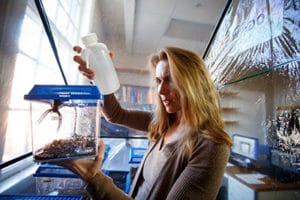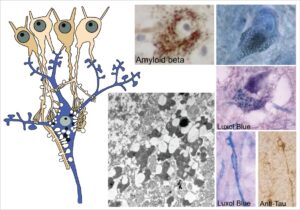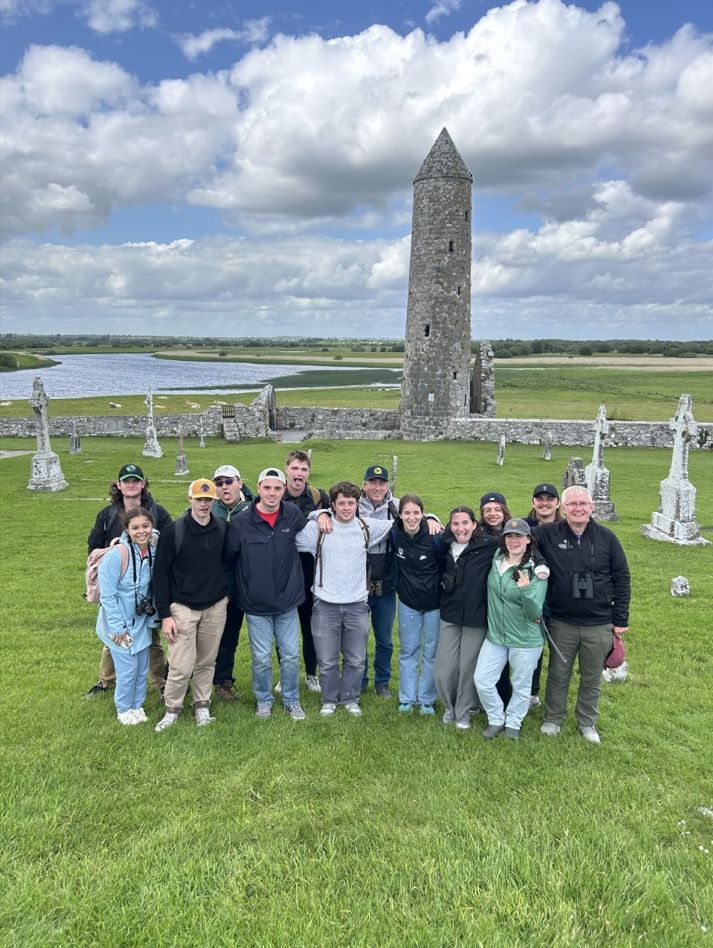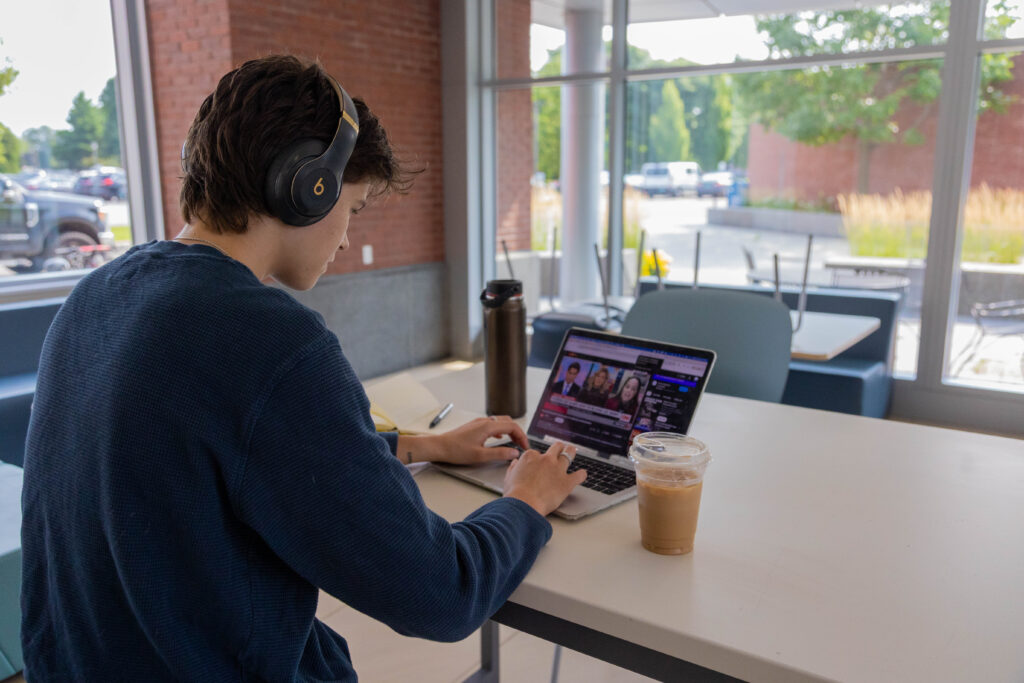Spider brain research leads VT neuroscientists to groundbreaking discovery in Alzheimer’s-affected human brains


Researchers from Saint Michael’s College and the University of Vermont have made a groundbreaking new discovery that provides a better understanding of how Alzheimer’s disease develops in the human brain.
Guided by previous research of spider brains, the scientists uncovered evidence of a “waste canal system” in the human brain that internalizes waste from healthy neurons. They discovered that this system can undergo catastrophic swelling, which leads to the degeneration of brain tissue, a hallmark of Alzheimer’s disease.
With over 50 million affected people worldwide, Alzheimer’s disease is among the leading causes of death in the U.S.
The findings, which have been published by The Journal of Comparative Neurology, offer a compelling new explanation for commonly described brain pathologies observed in Alzheimer’s disease, including amyloid-beta plaques, tau tangles, and spongiform abnormalities.

Professor Ruth Fabian-Fine has mentored groups of summer research students for years in her ongoing work studying the neurology of spiders. (File photo)
Supported by the Vermont Biomedical Research Network (VBRN), the research was carried out in collaboration among Dr. Ruth Fabian-Fine (Saint Michael’s College, UVM Robert Larner, M.D. College of Medicine), Dr. John DeWitt (UVM Robert Larner, M.D. College of Medicine, UVM Medical Center), Dr. Adam Weaver (Saint Michael’s College), and Saint Michael’s undergraduate research students Abigail Roman and Melanie Winters, both members of the Class of 2025.
“The Vermont Biomedical Network has been thrilled to support Dr. Fabian-Fine’s research from its initial focus on animal neuroscience to the more recent and potentially groundbreaking emphasis on the cellular basis of human neurodegeneration,” said UVM’s Dr. Christopher Francklyn, the Director of VBRN. “Her exciting work, and the outstanding training she has provided to her undergraduate co-investigators, epitomizes what NIH hopes to accomplish with its national IDEA program.”
Neuroscientist Dr. Fabian-Fine and her team initially investigated the underlying causes for neurodegeneration in Central American wandering spiders that suffer from conditions similar to degenerative diseases in humans. Because the spider neurons were a larger size, the scientists were better able to observe their brain functions. They quickly discovered a waste-internalizing glial canal system that undergoes structural abnormalities in degenerating spider brains, which leads to uncontrolled depletion and death of brain cells.

An image from the report’s graphical abstract. The scientists demonstrate that both Alzheimer’s-affected neurons and glial cells are obstructed by amyloid beta-immunoreactive receptacles that likely internalize tau protein. This affects the cytoplasm of the cells, gradually leading to cell death. (Photo credit: The Journal of Comparative Neurology)
This discovery prompted Fabian-Fine, a Vermont Center for Cardiovascular and Brain Health Pipeline Investigator, to explore whether a similar system could be found in both rodent and human brain tissue, so she teamed up with neuropathologist Dr. DeWitt at UVM’s Larner College of Medicine. The collaborative undertaking led the scientists to gather overwhelming evidence that neurodegeneration in human and rodent brains may have similar underlying causes compared to those observed in spider brains. The scientists’ report outlines possible underlying causes for neurodegeneration that may offer a promising new avenue for drug development that can address the structural abnormalities that lead to neurodegeneration.
Dozens of student researchers at Saint Michael’s College contributed to the multi-year research that provided the foundation for this breakthrough. Experiments occurred at Saint Michael’s College, the University of Vermont Medical Center, and at the UVM’s Center for Biomedical Shared Resources.
About Saint Michael’s College
Saint Michael’s College, founded in 1904 on principles of social justice and leading lives of purpose and consequence, is a selective, Catholic college just outside Burlington, Vermont, one of the country’s best college towns. Located between the Green Mountains and Lake Champlain, our closely connected community guarantees housing all four years and delivers internationally respected liberal arts together with an innovative Purposeful Learning Program, preparing students for fulfilling careers and meaningful lives. Young adults here grow intellectually, socially, and morally, learning to be responsible for themselves, each other, and their world. Learn more at smcvt.edu.
About UVM: For People and Planet
Founded in 1791, UVM is the leading public research university where discovery, creativity, community, and action coalesce to secure a thriving future for people and planet. Vermont’s state flagship and land-grant university attracts $260 million annually in groundbreaking research and enrolls approximately 14,000 students from 50 states and 75 countries. At UVM, students, faculty, and staff work together in pursuit of a healthier, greener future. Learn more at uvm.edu.
About the Larner College of Medicine at the University of Vermont
Founded in 1822, the Robert Larner, M.D. College of Medicine at the University of Vermont is dedicated to developing exceptional physicians and scientists by offering innovative curriculum designs, state-of-the-art research facilities, and clinical partnerships with leading health care institutions. The college’s commitment to excellence has earned national recognition, attracting talented students, trainees, physicians, and researchers from across the country. With a focus on inclusive excellence, the Larner College of Medicine prides itself on cultivating an environment that uplifts and supports its faculty and student populations while advancing medical education, research, and patient care in Vermont and beyond. Learn more at uvm.edu/larnermed.
Media contact: Liz Murray, Associate Director of Public Relations at Saint Michael’s College, emurray@smcvt.edu.






